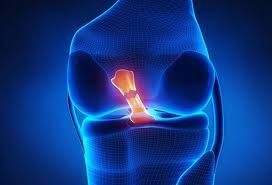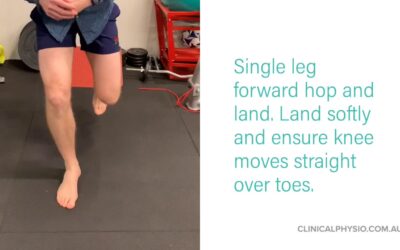 Controversy exists regarding the optimal treatment of a torn ACL and whether surgery is necessary.
Controversy exists regarding the optimal treatment of a torn ACL and whether surgery is necessary.
Australia has an extensive ACL problem with the highest rates of rupture in the world at 10,000 per year (Moses, Orchard, & Orchard, 2012). This is due to grass types and the popularity of cutting/change of direction sports such as netball, AFL and soccer.
Of these ruptures, Australia also has the highest rates of ACL surgery in the world at 90%, with only 10% of patients choosing conservative management. The decision to operate comes as a big one, with surgery costing between $5,000-$15,000.
How Does it Occur?
ACL injuries usually occur landing from a jump, pivoting or decelerating. The vast majority (70-80%) are non-contact injuries, usually related to biomechanical issues such as poor landing mechanics. The other 20-30% are contact injuries resulting from a direct blow or perturbation, such as a collision or being knocked mid-jump or run. For these reasons, ACL injury is common in sports such as skiing, AFL, netball, soccer, basketball and gymnastics.
Does Gender matter?
While more males suffer ACL injury on the whole, there is a gender bias towards females sustaining ACL injury. When exposed to the same level of activity (training & game time), females have a 2-8x higher risk of rupture.
Other risk factors
Extrinsic – (outside of the individual)
-
Dry fields, artificial turf
-
Game intensity – rates compared to training intensity
-
Grade of match – quality increases risk e.g. elite higher risk vs recreational
-
Greater torsional resistance – more cleats in shoes = torsion and risk
Intrinsic
Females have a higher rate of ACL injuries due to:
-
Hormonal effects: laxity, strength, fatigue-ability (however no conclusive evidence of menstrual cycle risk)
-
Decreased hamstring strength
-
Biomechanical – landing mechanics (females land stiffer with less hip bend)
-
Trunk strength / control
Some other intrinsic risk factors apply to both males and females
-
Greater BMI, weight, age
-
History of previous ACL reconstruction
Surgery vs Non-Operative Management
Several factors come into consideration when deciding between operative or conservative management. Not all ACL injuries require an ACL reconstruction. With the latest data (up to 2022), it looks like up to 50% of torn ACL’s can heal naturally and this may be aided by the use of a brace to lock the knee at 90deg for at least 4 weeks. We also know that many people can cope without an ACL at all. Each case should be assessed individually and a discussion should be had between the patient, physiotherapist and surgeon as to the best course of action required.
The following factors may help guide the decision to have surgery or not.
The following factors may contribute to a decision to AVOID surgery.
- A type 1 tear where the ACL has not pulled away from the femoral attachment
- A partial tear
-
Older age (>40)
-
Not participating in any sports that require repetitive pivoting
-
Functional knee stability – no repeat episodes of “giving way”
-
Success with rehabilitation. The current recommendations are for EVERY athlete who suffers an ACL injury to undergo at least 8-12 weeks of rehabilitation before considering surgery
-
Isolated ACL injury. E.g. no other tissues were damaged
The following factors may contribute to a decision to UNDERGO surgery.
- A type 3 tear with femoral avulsion
-
Younger age
-
Participation in pivoting sports
-
**Knee Instability – recurrent episodes of giving way
-
Competitive/elite sports
-
Failed 8-12 weeks of prehabilitation
-
Comprehensive injury (MCL, meniscus)
** Instability is defined as one extra episode of giving way (not including the initial injury)
Long-term effects of ACL tear without surgery – What does the research say? (KANON trial)
The results of surgery vs no surgery are no different at 2 & 5 years post-op
At 5 year follow up:
-
Early surgery + exercise had worse outcomes than those doing exercise only rehab
-
Worse pre-operative knee outcome scores in the early surgery group led to more knee symptoms at 5 years post-op
-
Worse pre-operative knee function associated with worse knee symptoms, reduced knee function and decreased quality of life at 5 years
- There is NOT an increased risk of developing osteoarthritis if you choose to not have surgery.
Clinical Recommendations: (Filbay, Ackerman, Russell, & Crossley, 2017)
Do rehab first!
Individuals that do rehab (exercise + strengthening) prior to surgery have superior outcomes to those that have early surgery. Delaying surgery allows for better resolution of joint trauma prior to second trauma (surgery) to the knee. It also allows time to develop better pre-op muscle strength and neuromuscular control. This enables the individual to enter surgery with a better knee outcome score, which is prognostic for better 5-year outcome.
Interestingly, a 2019 study showed that 45% of those who were originally classified as being unable to cope without an ACL became a potential coper after just 5 weeks of exercise rehab (Thoma et al., 2019).
Return to Sport Rates
-
Only 1/3 return to pre-injury level of sport 12 months post-op ACL repair.
-
90% of patients RTS after an ACL injury, only 50% return to pre-injury activity level
-
~30% of people never return to sport!
Re-Injury Risk
-
Graft re-rupture rate after 10 years is 6%
-
1 in 3 patients <20yrs age that return to sport will sustain a second ACL injury within the first two years after repair – the greatest risk is in 1st year post op
-
Athletes who return to hard cutting/pivoting sports earlier than 1 year post-op were 6x more likely to sustain a 2nd ACL injury upon return to sport irrespective of age (Grindem, Engebretsen, Axe, Snyder-Mackler, & Risberg, 2020)
-
Young athletes <25 years who return to high risk cutting/pivoting sports have a 30-40x greater risk of sustaining a second ACL injury.
Long-Term Outcomes
-
50% of people will develop arthritis 20 yrs post injury regardless of surgery or not
-
Arthritis risk higher after surgical repair but have better stability and less secondary meniscus tears compared with conservative
-
The risk of developing arthritis increases if the original injury also involved a meniscus tear
Take home messages
-
Many people can function normally without an ACL
-
Surgery can have significant financial costs ($5-$15k) and there is still a risk of re-rupture (6%)
-
5 weeks of exercise rehab should be performed following ACL injury, prior to considering to identify potential “copers”
-
Knee function is the same at 2-yrs and 5-yrs post injury, regardless of surgery or not
-
Surgery may still be the course of best action for high-level, younger athletes who wish to return to cutting/pivoting sports OR those with instability/giving way who have failed at least 5 weeks of rehabilitation.
References
Filbay, S. R., Ackerman, I. N., Russell, T. G., & Crossley, K. M. (2017). Return to sport matters-longer-term quality of life after ACL reconstruction in people with knee difficulties. Scand J Med Sci Sports, 27(5), 514-524. doi:10.1111/sms.12698
Grindem, H., Engebretsen, L., Axe, M., Snyder-Mackler, L., & Risberg, M. A. (2020). Activity and functional readiness, not age, are the critical factors for second anterior cruciate ligament injury – the Delaware-Oslo ACL cohort study. Br J Sports Med. doi:10.1136/bjsports-2019-100623
Moses, B., Orchard, J., & Orchard, J. (2012). Systematic review: Annual incidence of ACL injury and surgery in various populations. Res Sports Med, 20(3-4), 157-179. doi:10.1080/15438627.2012.680633
Thoma, L., Grindem, H., Logerstedt, D., Axe, M., Engebretsen, L., Risberg, M. A., & Snyder-Mackler, L. (2019). Coper Classification Early After ACL Rupture Changes With Progressive Neuromuscular and Strength Training and Is Associated With 2-Year Success: Response. Am J Sports Med, 47(11), NP65-NP66. doi:10.1177/0363546519863309

B.Physiotherapy. B.App.Sc. (Exercise & Sports Science). Cert.Spinal.Man.Tpy., APAM
Hayden graduated in October 2018 and has undergone 5 months of further training with our Principal Physiotherapist, Andrew. He completed his Bachelor of Physiotherapy at Charles Sturt University and was presented with a Dean’s Award for Academic Excellence at graduation. This followed a Bachelor of Exercise and Sports Science at Sydney Uni in 2014 and a Cert IV in Massage Therapy in 2015.



